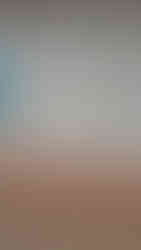Block/Red Brick Home
- Jose Hernandez
- Jul 29, 2018
- 3 min read
Paint removal on Block/Red Brick home.
The process in this project was very simple to say, but as with any other job there might be usual similarities, but very different details.
First off, prior to starting the work we did a few samples, just to know what type of material works best and how much of it, the project would require.
So in doing a demo near the bottom portion of a wall, we discovered once we had completely removed all the paint that, "hey, theres red brick at the bottom 2 feet and masonry brick after that." In all my years of experience, i've never seen that, so it was my first, but interesting as well.
This home was about 2500 sq ft, and took us about 8 days to complete.
The basic process included chemical application, pressure washing, and sandblasting.
Not every project is just "sandblast and go" as what other companies would do. Everything is determined by how many layers of paint there are, what type of material surface is under the paint, and what the does the environment look like,( for containment purposes). We need to make sure we leave a bare surface without any damage. This way, the owner can feel assured about of whatever steps they need to take after we complete the work, instead of putting over the budget costs, on repairs.
So work started with detailed containment which involved covering any area that could be affected by chemical or sandblast overspray. We used heavy duty poly sheeting and duct tape over windows, and doors. There were a few areas of minimal retapping, that was needed after pressure washing, but after that was addressed, everything held up really well for the sandblasting.
Most of the time we get questions or concerns of plants or future planting near the home,... is it safe?
For small tender plants it would be best to pull out, store in a pot, and replant about 1 or 2 weeks after we have completed the work. Just enough time for the soil to dry out really well, since most of the work involves pressure washing, theres lots of water coming down on the area.
As for bushes, schrubs, or trees, we can either cover with plastic or trim away from the home, just enough to give us room to work.
Here you can see the walls turned out really nice, hardly a spec of paint left on after the chemical and wash.
Now some people would say "this looks nice enough, why would you need to sandblast after?"
The reason sandblast is optional after we complete the chemical wash, is to give the face of the block or brick a textured look. You see sandblasting the bare block to give it texture, is like smooth concrete next to exposed aggregate concrete. It gives it that rougher looking feel to it.
In other cases straight sandblast is ok, but you don’t know until you test out several areas, and not just in the worst looking area that has most of the paint peeling off already. If the paint doesn’t come off with just the blast, then its best to take the extra steps to ensure a complete finish.
Everything went as planned on this project, no issues at all. Once all the chemical washing was done, then we proceeded with the sandblast on the brick/block face and that all turned out great as well.
So in concluding from this project, here are some guidelines that we go by (aside from the work it self) before we start a chemical washing job on a red brick or block home.
-The Weather... we try to plan to the work in the fall/winter/spring season. Biggest reason is because the surface is too hot in the summer and the chemical dries outs quickly.
-Containment... try to keep the rest of the environment how it was before the work started.























Comments